Shanghai Port succeeded in their goal of becoming Chinese Super League champions in 2023, with Javier Periera guiding his team to silverware at the first attempt.
It marked their first title success since they had put a stop to Guangzhou Evergrande’s famous period of footballing dominance in 2018, but things weren’t as rosy as they may have seemed in Shanghai.
The nature of their early-season play highlighted Shanghai Port’s footballing supremacy.
They stretched their league table advantage to 14 points, with fans seemingly awaiting their team to win the league at a canter.
However, poor form at the business end of the season created a period of unwanted tension for Shanghai Port, with their lead cut down to just four points as the season drew to a close.
Along with an embarrassing defeat in the AFC Champions League qualifying stages, Periera was relieved of his duties and Shanghai Port were left searching for their next great successor.
After a J1 League triumph with Yokohama F. Marinos, new manager Kevin Muscat has had an astounding effect on Shanghai Port. The Australian manager has preserved an unbeaten league record since taking control.
Despite being wary of replicating past successes in a totally new environment, the former Ange Postecoglou disciple has positively influenced Chinese football.
This Kevin Muscat tactical analysis will begin to highlight some of the reasons why Kevin Muscat’s style of play have allowed Shanghai Port to operate in a whole new gear, with their players embracing the refreshing, high-octane football.
Our analysis will cover Shanghai Port’s tactics both in and out of possession, allowing us to pinpoint key reasons why they have been so free-scoring this season.
Build-Up Phase
It is no secret that Kevin Muscat has inherited a squad with the ability to challenge at the higher end of Chinese football, but the way that he has transferred critical principles from his time in Japan has made all the difference to a squad which had raised questions last season.
With an average age of 26.7
, Muscat’s Marinos benefited from rapid attacking sequences, exhibiting a speed of play that captured the attention of fans worldwide.
Despite boasting a significantly older squad over in China (30.5 years average age), Muscat has rejuvenated his team with an equally engaging method of play whilst remaining mindful of the physical demands it can bring.
Despite the recent mass departure of star international players from the Chinese Super League, Muscat has been able to craft a style that relieves the overall burden placed upon the likes of star man Oscar.
Over-reliance on just a couple of players came at a detriment to Shanghai Port’s effectiveness as the 2023 season wore on, with their focus now placed on a more team-centred approach.
Muscat and Shanghai Port have performed incredibly well when setting up in the 4-2-3-1.
Their initial distribution prioritises ball retention and the ability to work the ball along the defensive line to relieve pressure.
Muscat’s side is incredibly press-resistant, confidently avoiding hopeful balls and performing intricate on-the-ball manoeuvres to maintain possession. This is further supported by the fact that Shanghai Port ranks last in the Chinese Super League for long passes per 90 (30.89).
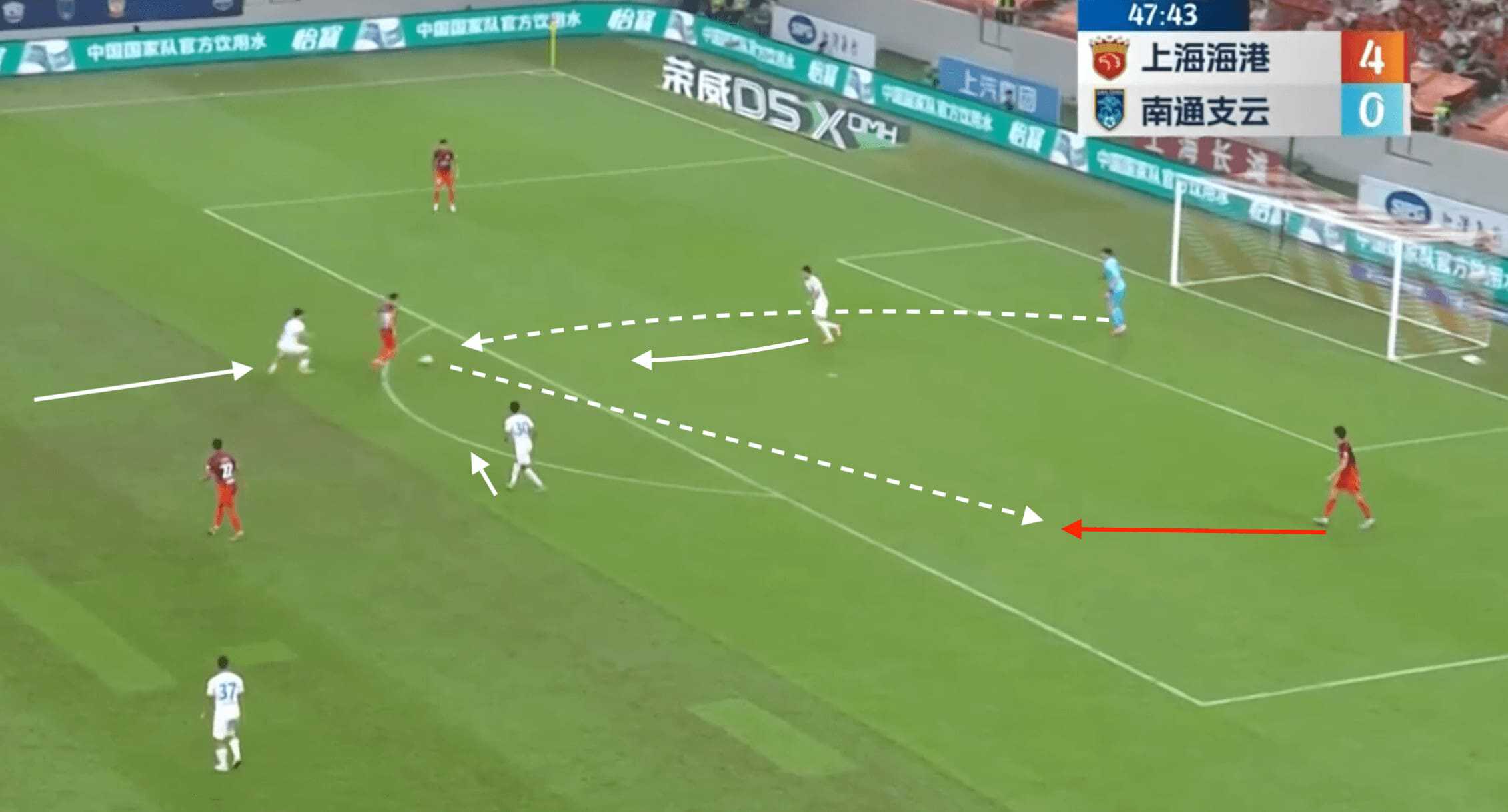
The relationship between their double pivot and defensive line is a key reason why they have been so effective in playing out from the back, with Leo Cittadini shown here to drop deeper in order to receive the pass from goalkeeper Junling Yan.
From this position, the defensive midfielder showcases his composure when faced with three Nantong forwards in close proximity.
He knocks the ball back to one of Shanghai Port’s central defenders, having affected the opposition’s defensive structure with his ability to draw defensive attention.
Full-Back Influence
When analysing why Shanghai Port have been so dominant in possession, perhaps the most intriguing adaptation to their build-up would be the movement and positioning of their two full-backs.
The unpredictability of their movement and positioning can be incredibly damaging for the opposition’s out-of-possession setup, as they strike an excellent balance between attacking intent and defensive protection.
The first example highlights how Kevin Muscat can utilise a 3-2-5 build-up shape, with right-back Shenchao Wang moving inward to recycle possession as part of a back three.
With one of the full-backs providing an option through the centre, this then allows the other to hold their width on the opposite flank and become effective in the final third.
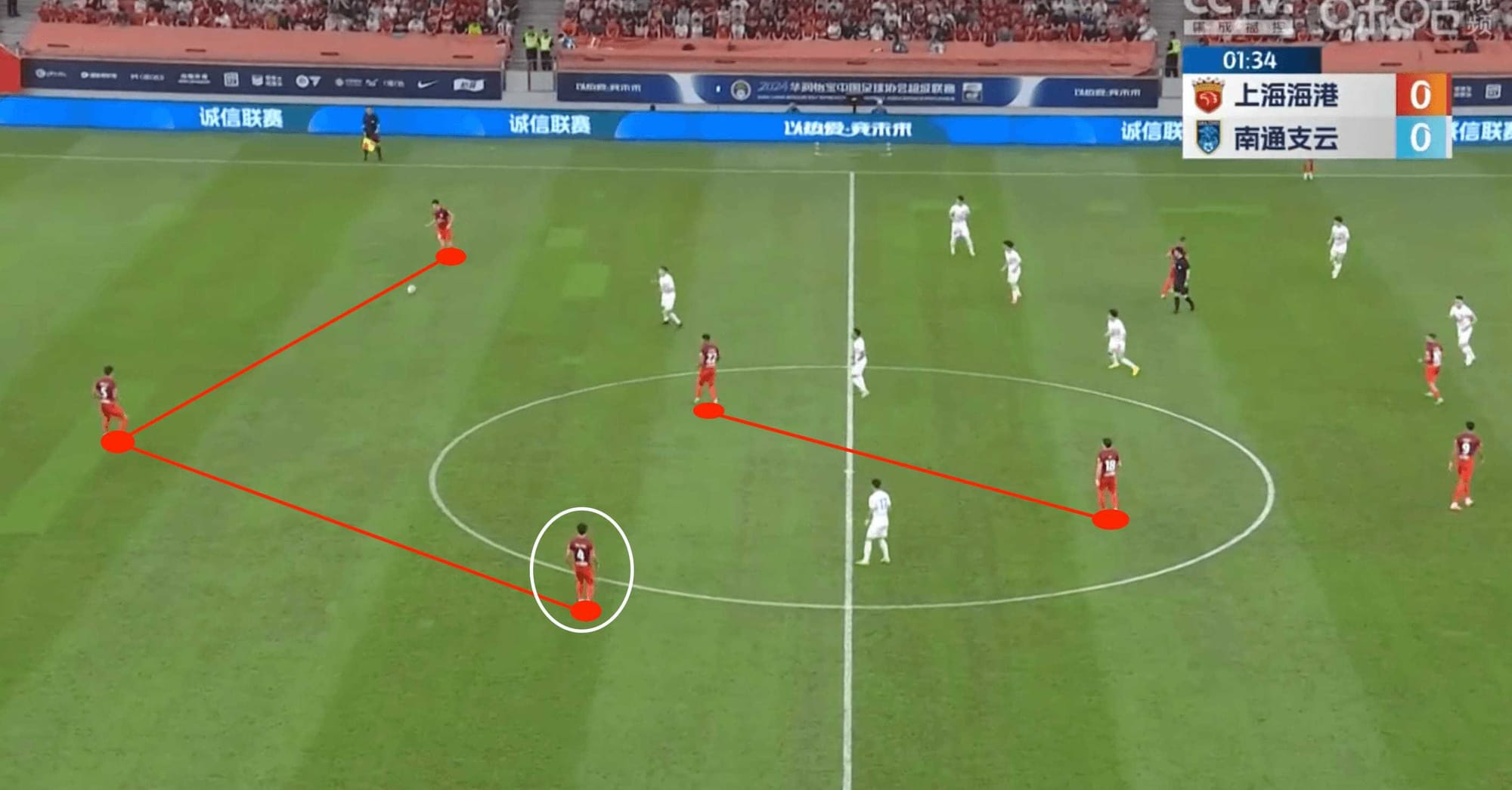
As this progresses up the pitch, we often see the inverting full-back morphing into more of a defensive midfielder, providing defensive support for the staggered double pivot.
The basis of Muscat’s attacking philosophy emphasises the creation of wide overloads and opportunities for their wide players to isolate the opposing defenders.
Therefore, against Nantong Zhiyun, we can see how Shanghai Port’s impressive rotations allowed Wu Lei to pick out the penetrative run of left-back Shuai Li, capitalising on the space vacated by Mathias Vargas’ inward run.
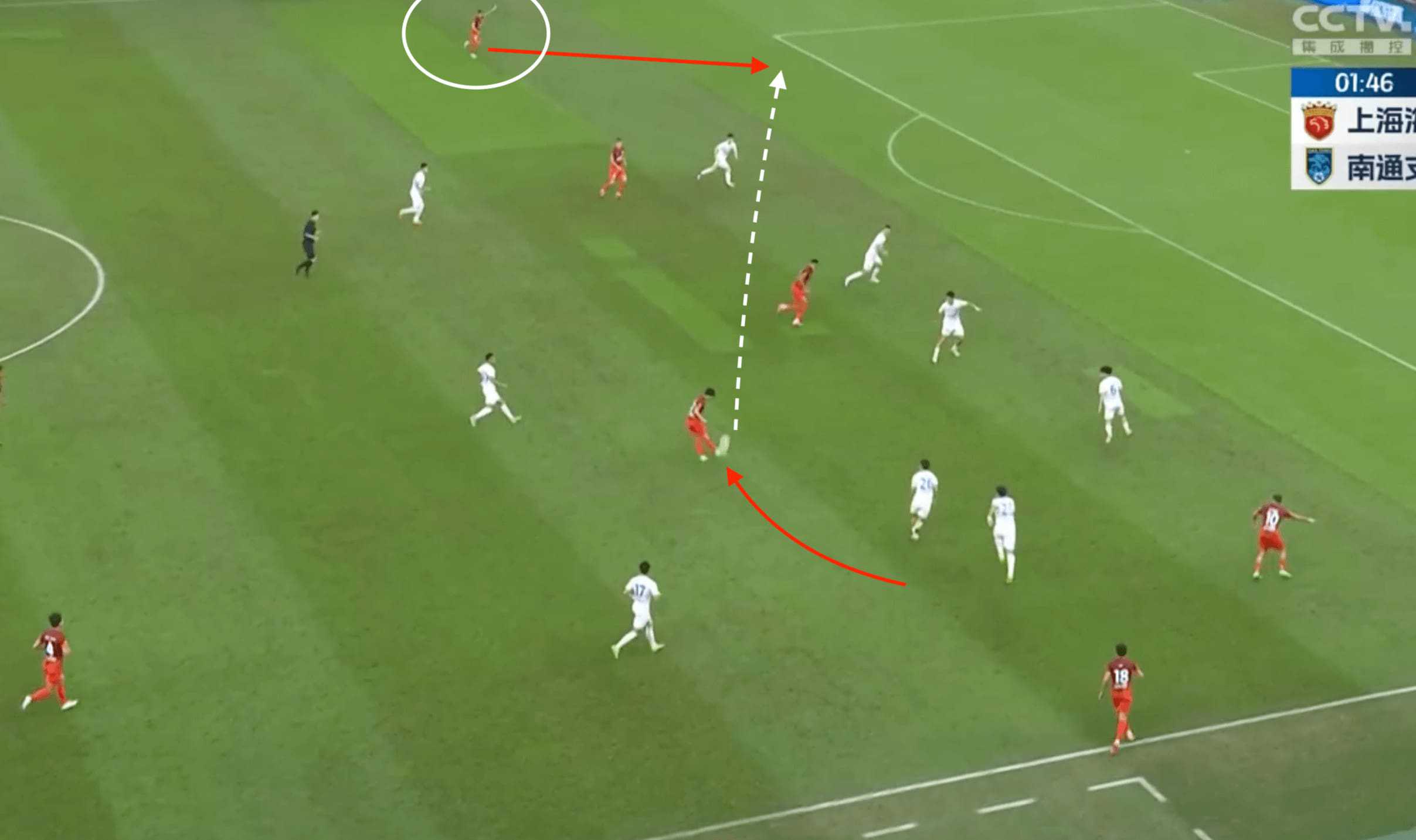
Even though they have shown their effectiveness when operating closer to the touchline, the Shanghai Port full-backs’ movement through the half-spaces really emphasises their attacking intent.
Muscat’s team have the freedom and confidence to deploy Shenchao Wang and Shuai Li in some incredibly advanced positions, supported by a defensive quartet to deny any quick counterattacks should possession be lost.
Shanghai Port currently leads the league in key passes per 90 (6.07), which can be attributed to Li’s positioning in the example below. The full-back is expertly placed to receive on the turn and attack the space between the lines.
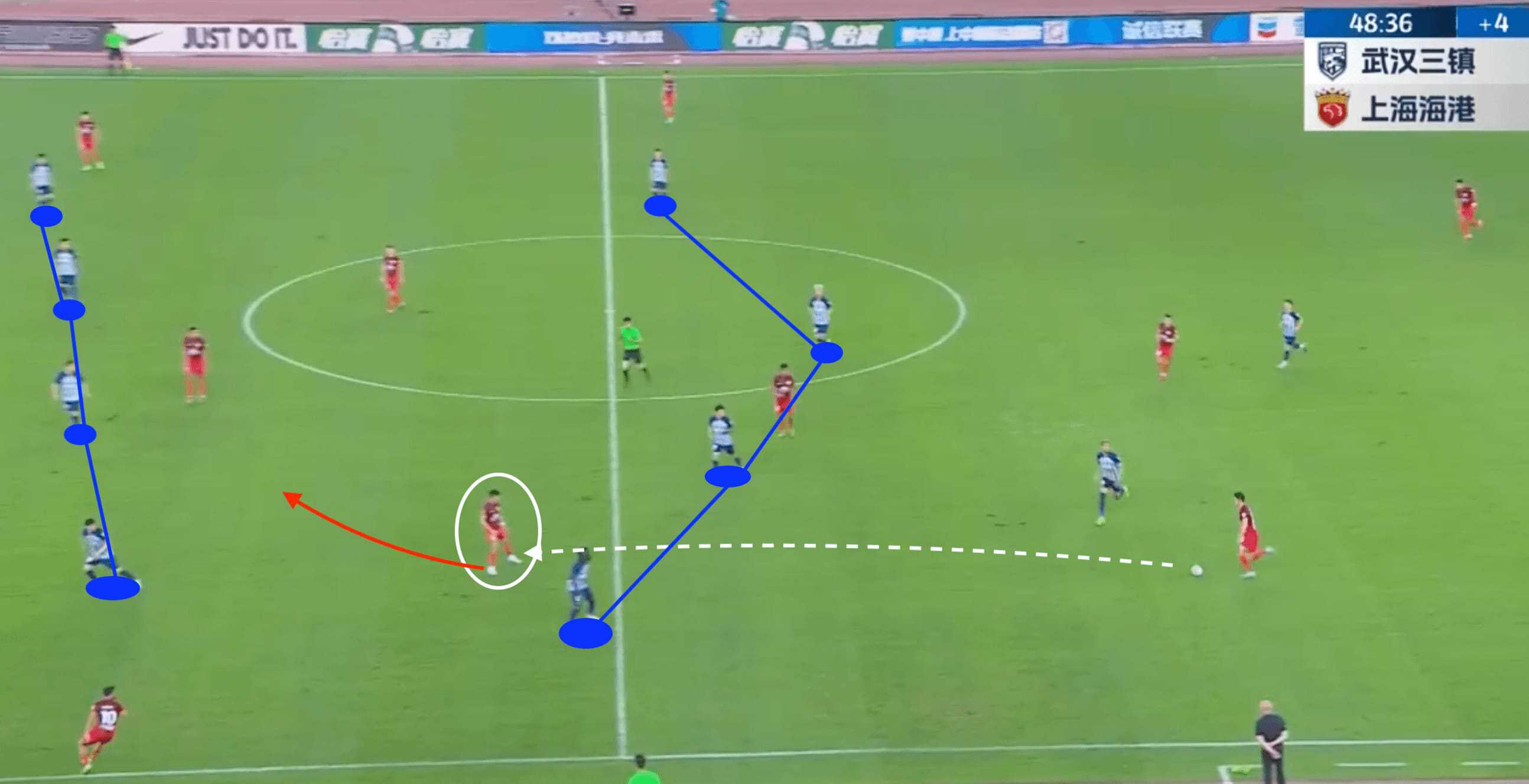
Final Third Success
At the business end of the pitch, Shanghai Port have emphasised their wide isolations to consistently create key goalscoring opportunities- with their full-backs playing a pivotal role.
In their victory against Tianjin Jinmen, we see Shanghai Port recycling an attacking opportunity before sliding the ball in behind to meet the penetrative run of Wang.
From here, Muscat’s side has excelled in their ability to flood the box and deliver pinpoint balls to their prolific forwards, ranking top of the CSL for crosses per 90 with 24.12.Wang’s drilled cross was then able to meet the onrushing Gustavo to open the scoring with ease, with defences across the CSL unable to cope with the speed of attack that Shanghai Port possess.
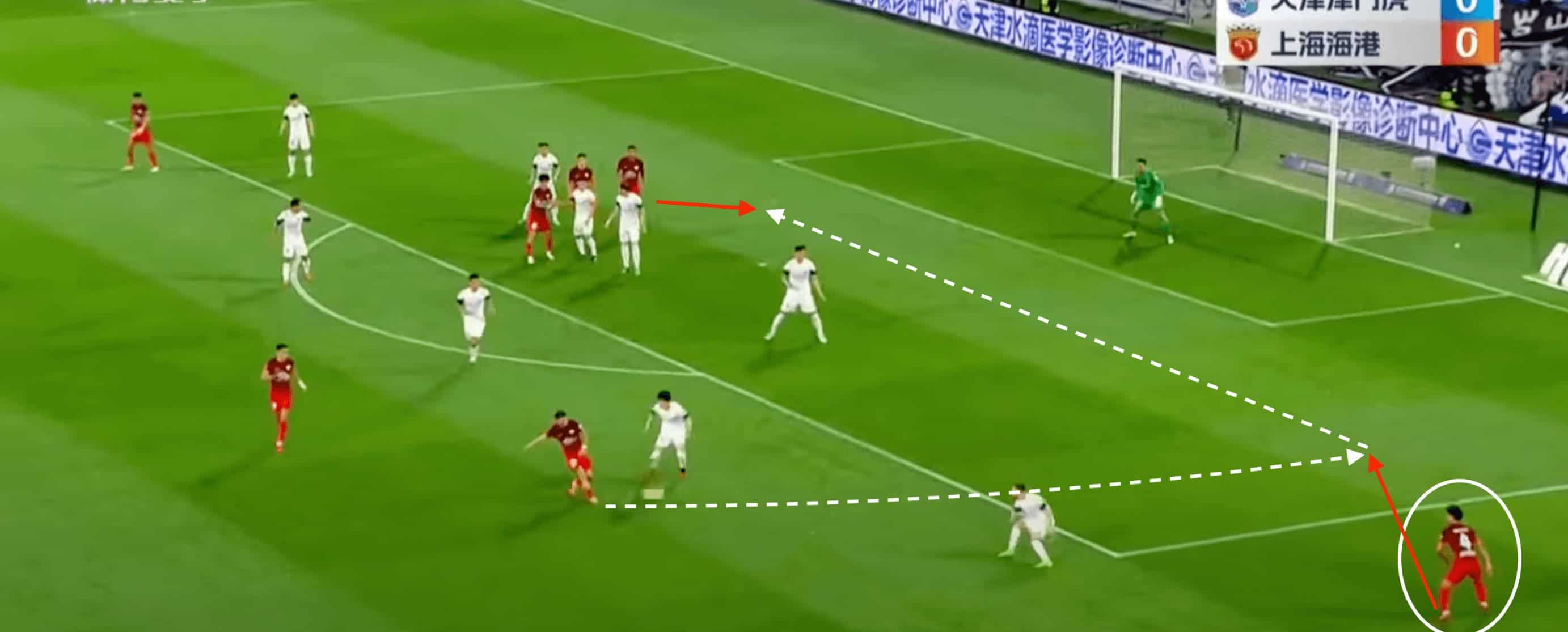
With defences across China recognising their threat from the flanks, this then creates the opportunity for an element of disguise in their chance creation.
The underlapping and overlapping runs of both Wang and Li are invaluable to Muscat, and so their presence in the final third has been effective in stretching the opposition’s defensive line and presenting opportunities to attack through the central areas.
Shanghai Port have been able to emulate the deep crossing attacks which had been so beneficial for Muscat in Yokohama.
The left back’s underlapping run forced the opposition to reduce their 2v1 pressure on Oscar, leaving the Brazilian with space at the top of the box to flash a dangerous cross across the face of goal.
Shanghai Port’s crossing has excellent variation, as they have additionally targeted floated switches to the back post, targeting potential runners who can provide an opportunity on goal or another pass across the goal.
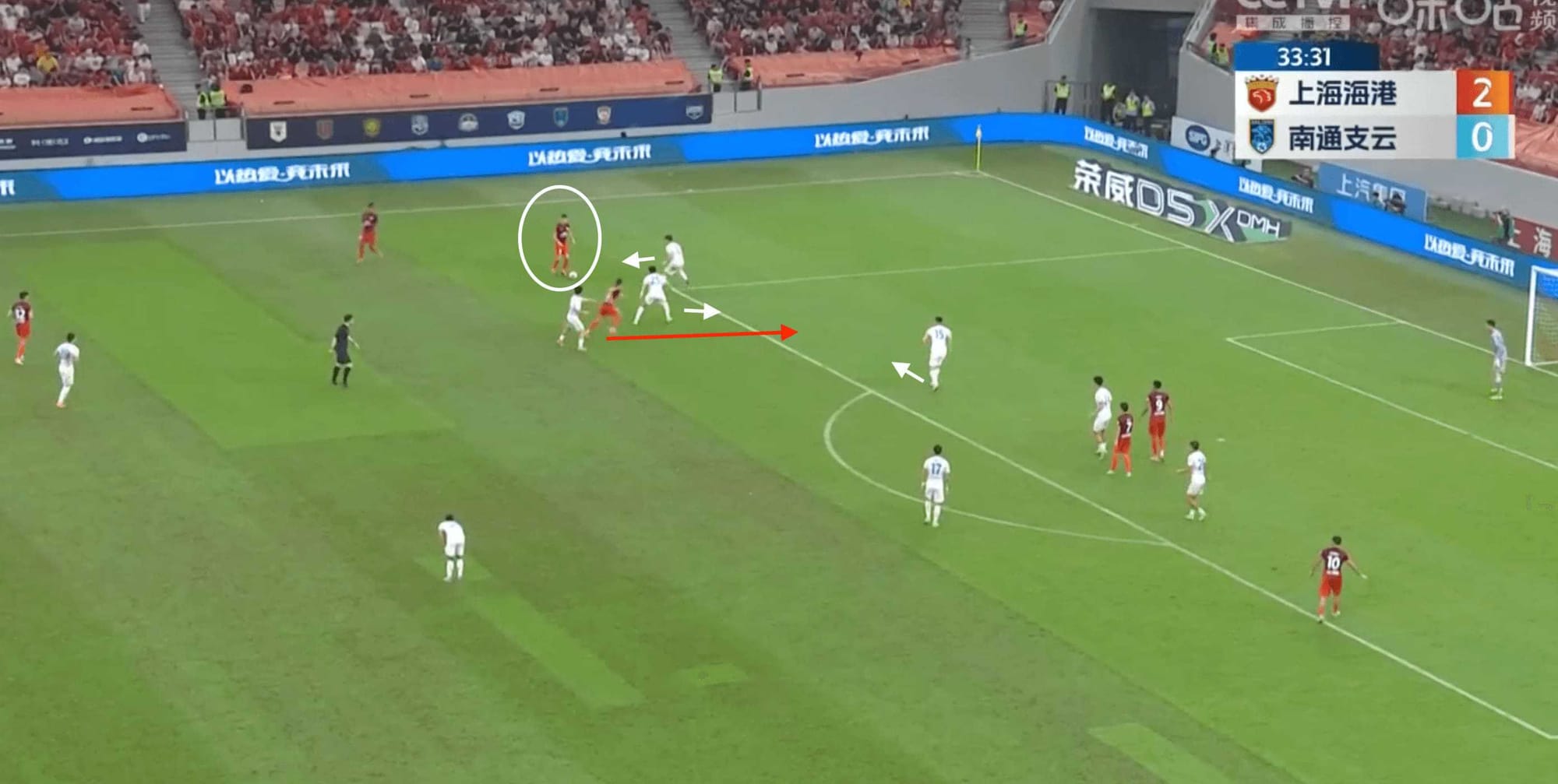
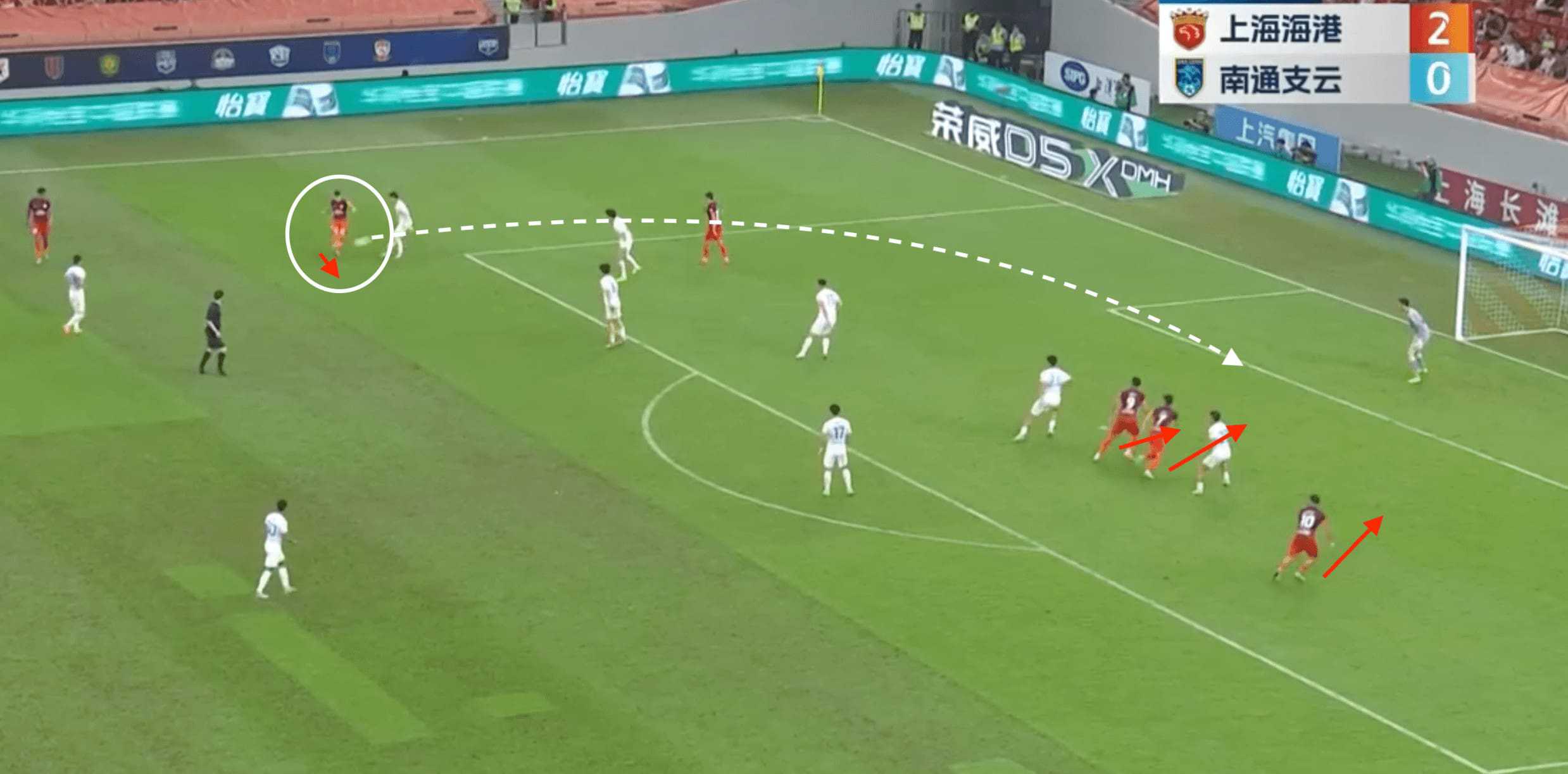
In their match against Beijing Guoan, Wang’s underlapping movement forces the Beijing defender to track his run into the penalty area, opening up a critical passing lane into the feet of Gustavo, with the Brazilian able to touch and fire towards goal.
Such variation in their attacking play under Kevin Muscat’s tactics has been one of the key contributors to Shanghai Port’s blown-away defences this season, scoring a remarkable 72 goals from 21 matches played.
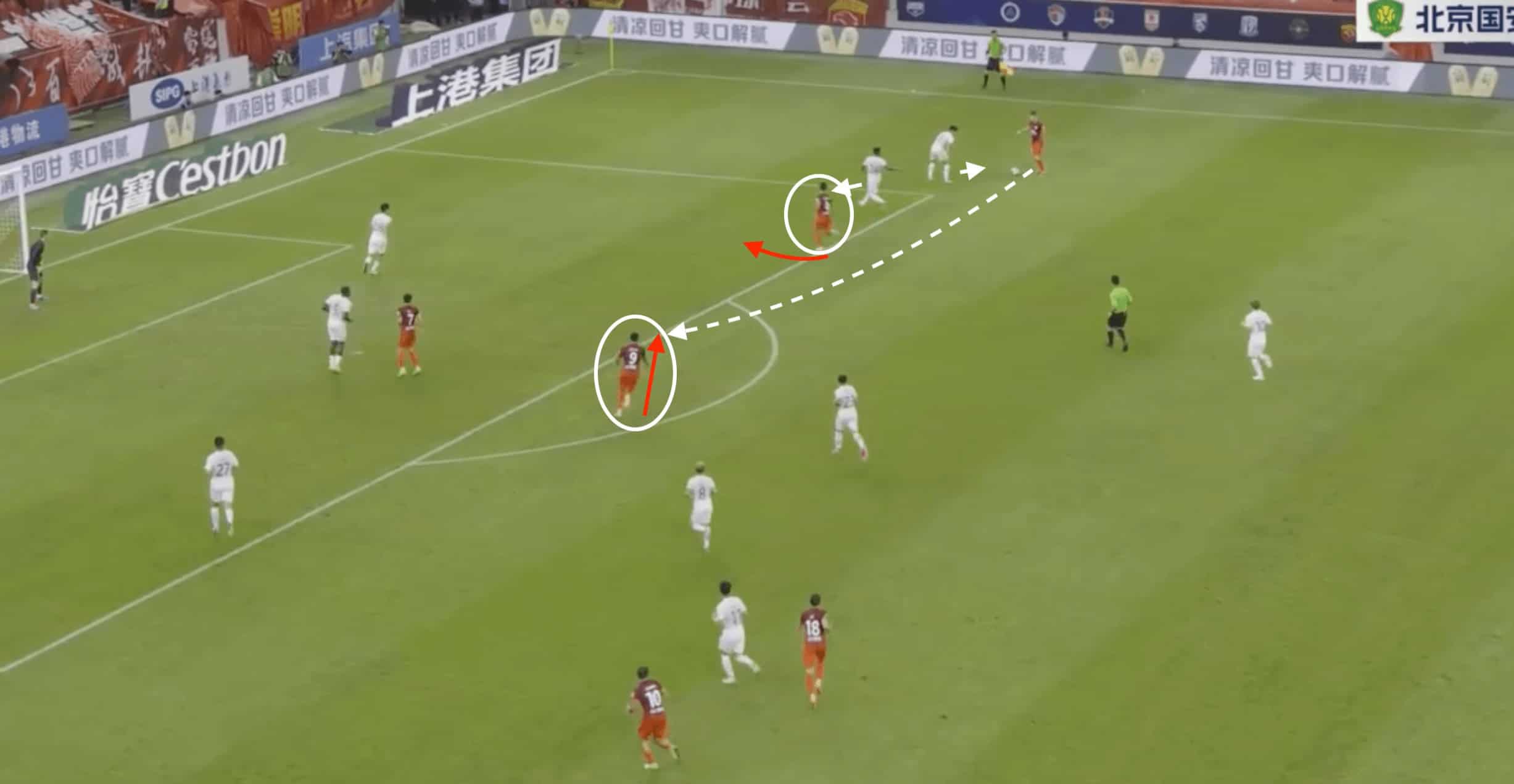
Kevin Muscat’s Defensive Approach
Shanghai Port’s out-of-possession play is not too dissimilar to last season’s, allowing for a seamless transitional period in adjusting to Muscat’s preferred style.
They maintain a proactive high-pressing strategy focusing on achieving high regains from which they can launch devastating counters.
Muscat has employed a suffocating
, relentless style of pressing. This man-oriented press often hasa 4-2-4 structure, with Shanghai Port’s wingers advancing up the pitch as Oscar looks to support Gustavo along the forward line.
From these striking positions, we see the two forwards’ movement catered towards denying easy passes inside the pitch for the opposing defenders to switch play.
With the presence of wingers looking to directly press the ball carrier or their closest passing option along the flank, opposing teams often resort to clearing the ball from danger and allowing Shanghai Port to force the turnover.
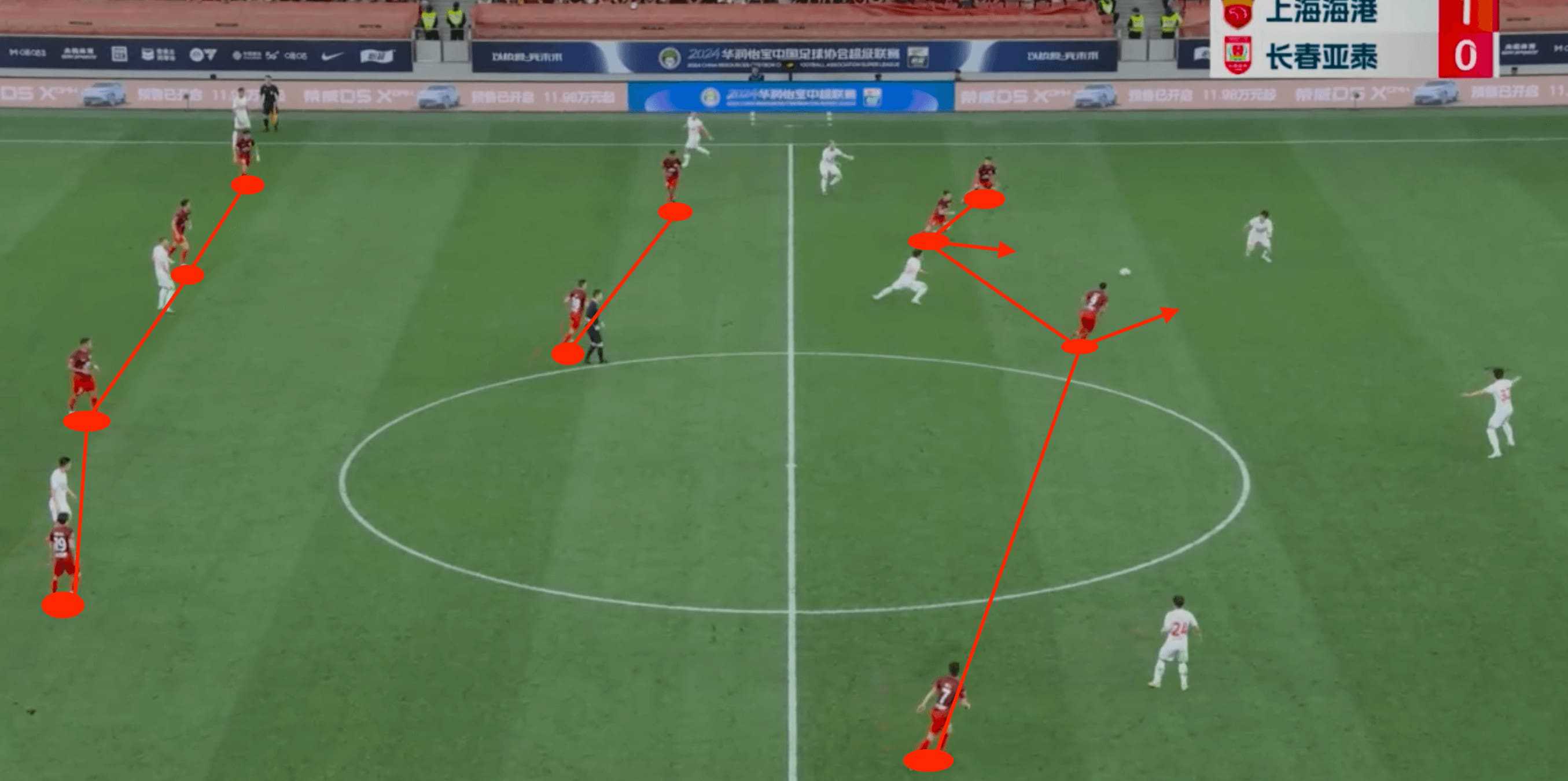
The underlying statistics
certainly support the notion that Shanghai Port is perhaps the most effective pressing team in China, as they rank first and second in the CSL for PPDA (7.14) and challenge intensity (6.3),respectively.
Nothing encapsulates the word “relentless” more than the image below, which highlights Shanghai’s disregard for the game state in its pursuit of another high regain.
Having just taken a two-goal lead against Nantong, they continue to press high immediately after the restart, this time pressing in a 4-1-5, having been accompanied by a member of the double pivot rushing into the opposition’s half.
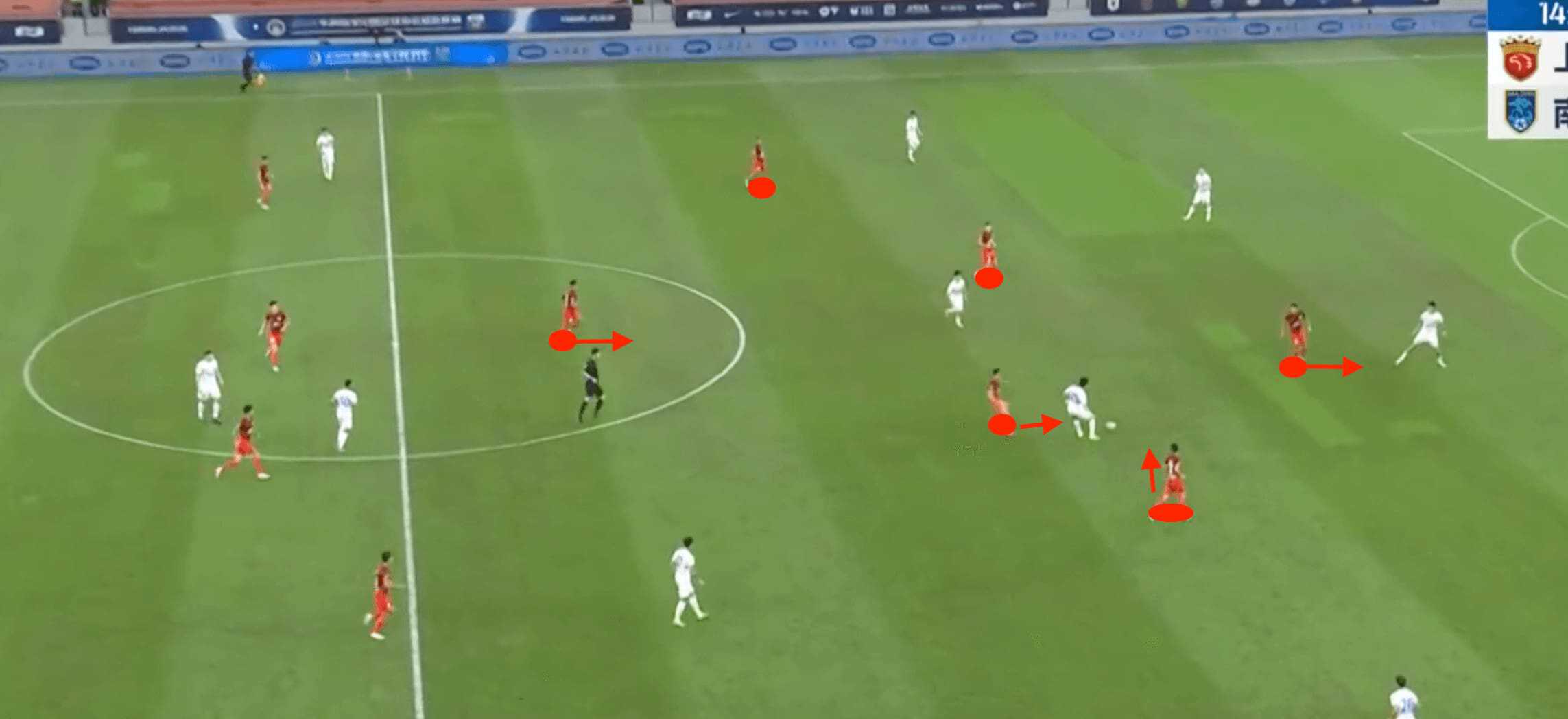
When experiencing periods of play without possession—which is indeed rare—Shanghai Port has been shown to set up in more of a 4-4-2 shape, with their wingers dropping back to support the midfield line.
Even with a slightly more reserved defensive structure, Shanghai Port remains proactive in its defensive actions. Members of the defensive line step forward to cut out any play between the lines, which have been naturally compressed to negate space.
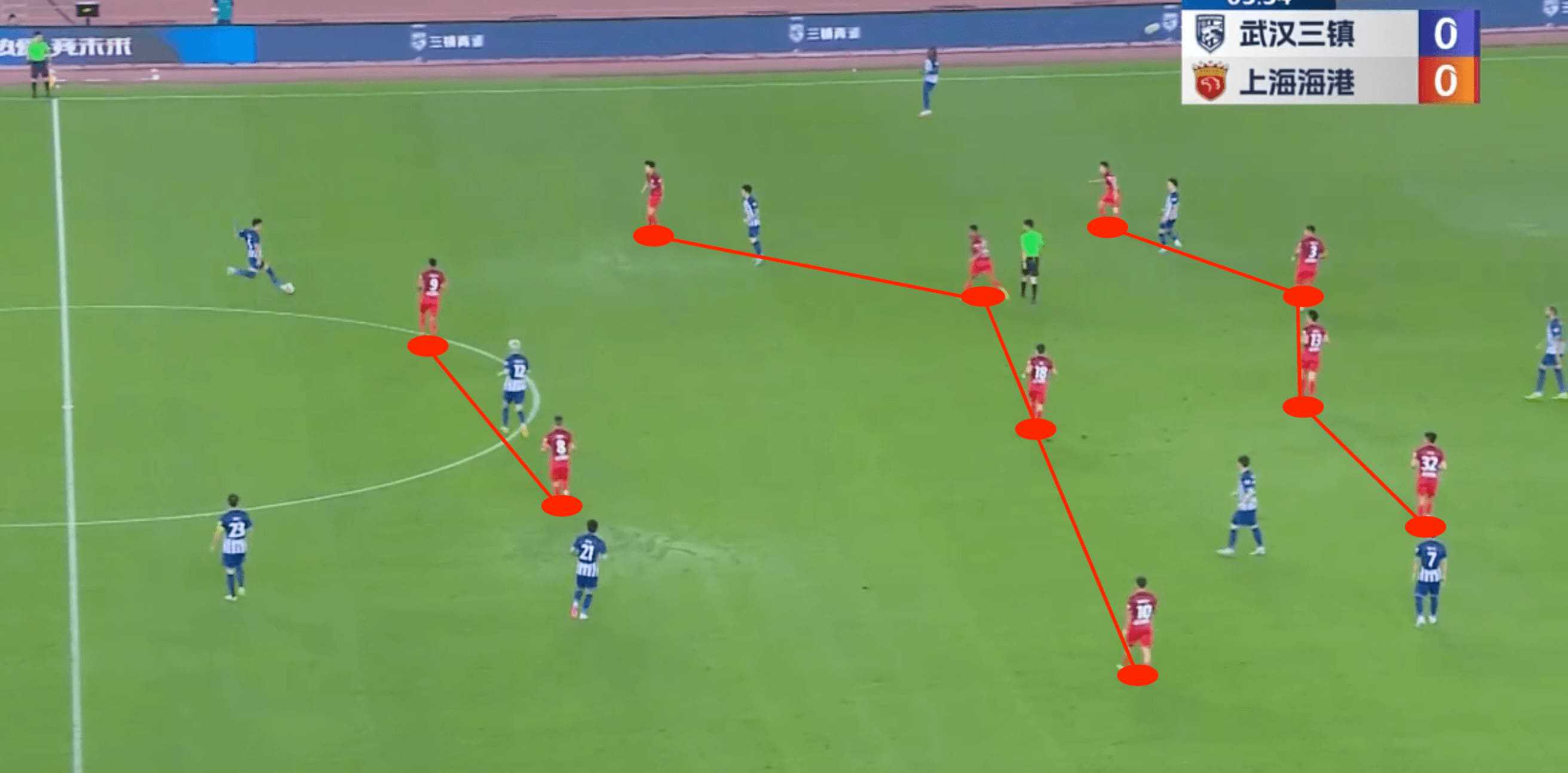
Kevin Muscat’s Areas Of Vulnerability
In what has been an almost perfect season thus far for Shanghai Port, their vulnerabilities have yet to be truly exploited.
Brief moments of weakness within the final third have been covered up by their free-scoring form, but their defensive structure has led to some hairy transition moments.
Shanghai Port has grown accustomed to dominating matches, recording the highest average possession (59.6%) in the CSL.
But in the face of an opposing team who looked to challenge them with their own style, Muscat’s team appeared slightly bemused despite emerging with all three points.
When travelling to Qingdao West Coast, the relegation battlers really took the game to Shanghai in the early stages.
There were some moments of progressive build-up when Muscat’s team had become slightly laboured in their pressing.
This created the need for them to be overly committed in their deeper defensive actions, with Ang Li’s desperate attempt to halt Qingdao’s attack resulting in a weakened backline that Nelson Da Luz’s pace could exploit.
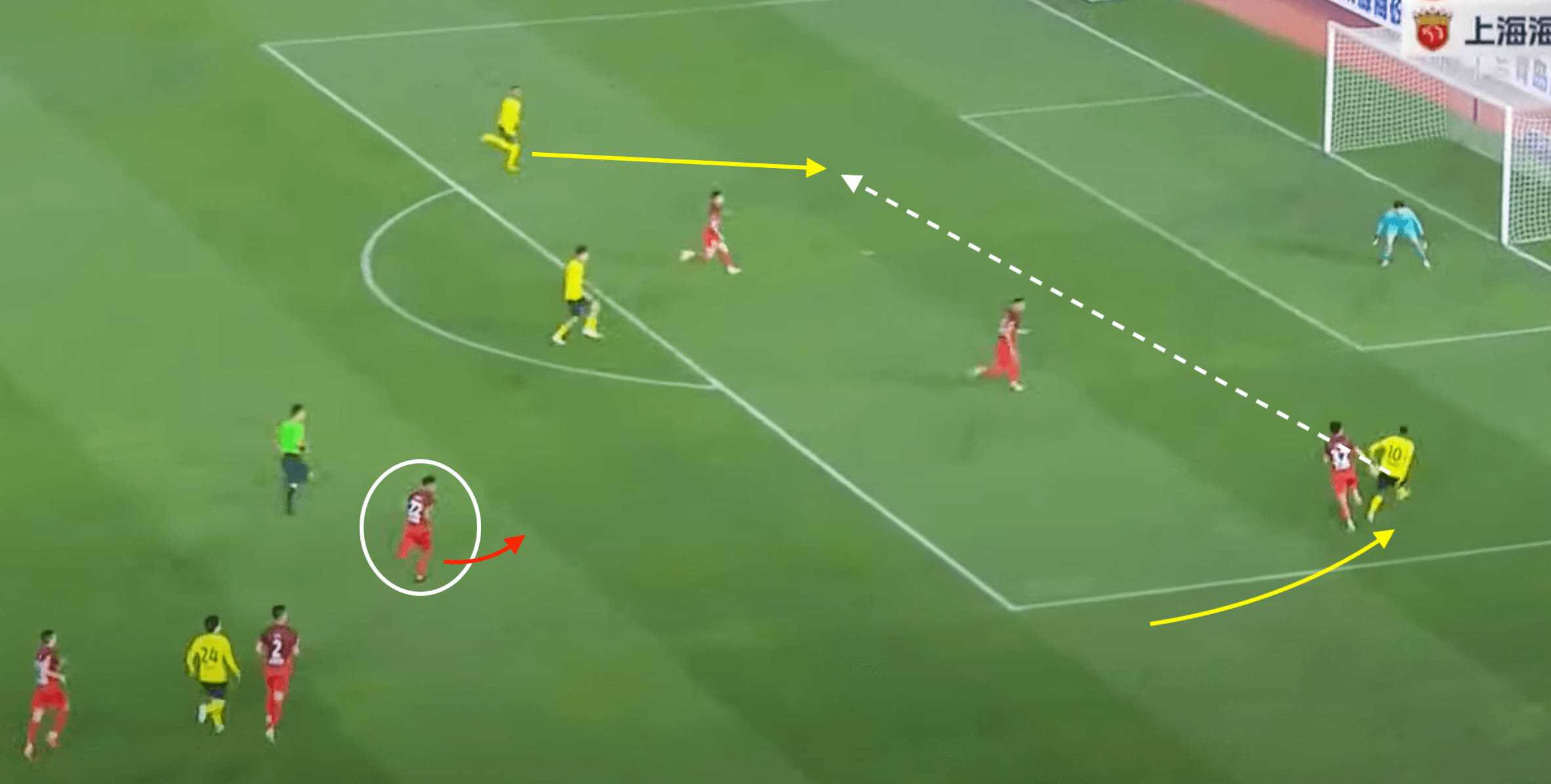
The over-commitment when defending has emerged as a worrying pattern for Shanghai Port but is often hidden beneath their impressive points tally.
Despite boasting numerical superiority in the 4v3 shown below, their ingrained tendency to be combative off the ball resulted in both the right back and right central defender engaging with the ball carrier.
Consequently, the incisive run in behind from the Qingdao Hainiu forward forced the left central defender to withdraw from his set position to provide a covering run across the box, creating an excellent passing lane for an unmarked foray into the penalty area.
Whilst these instances are rare and have yet to be truly taken advantage of, success on the continental stage will depend upon a much more coordinated defensive strategy in the unpredictable moments.
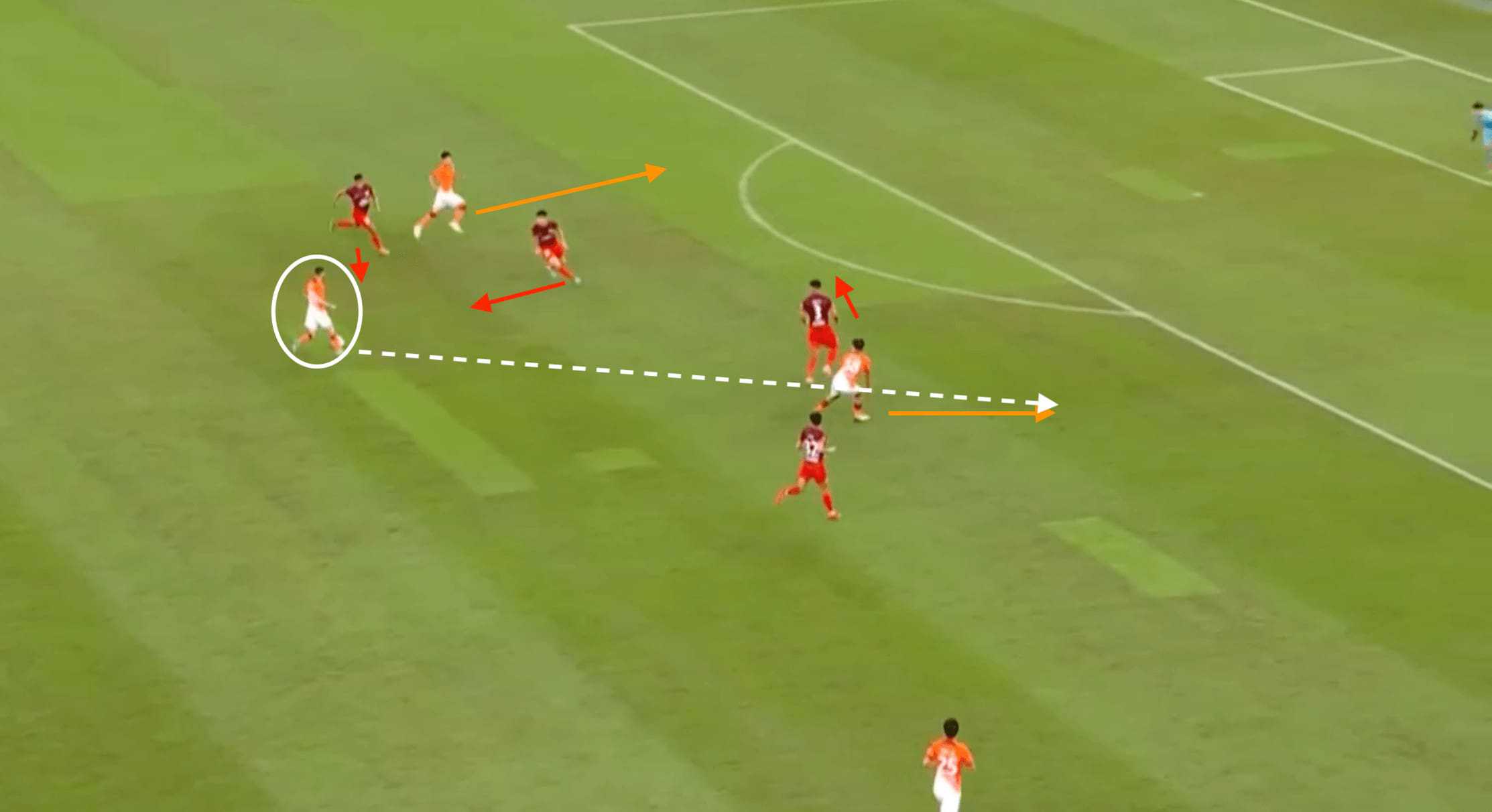
Conclusion
Unlike last season, Shanghai Port’s path to a consecutive league title appears to be much smoother.
Their unbeaten record speaks for itself, but the way they are able to defeat opposition teams has been remarkable.
Kevin Muscat’s managerial stock is only rising after another seemingly successful spell in Asian football, with clubs around Europe keeping their eye on the Australian.





Comments